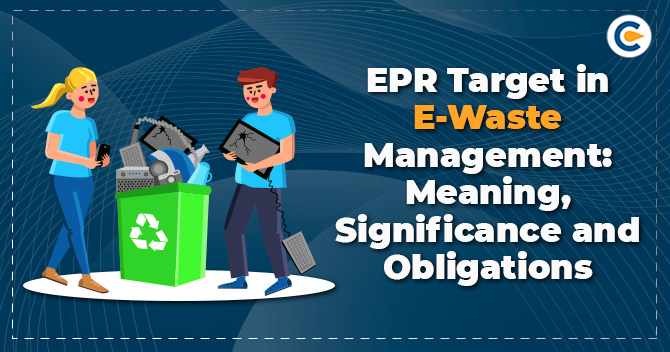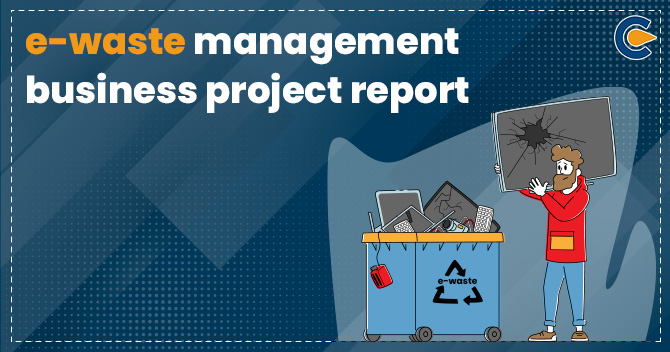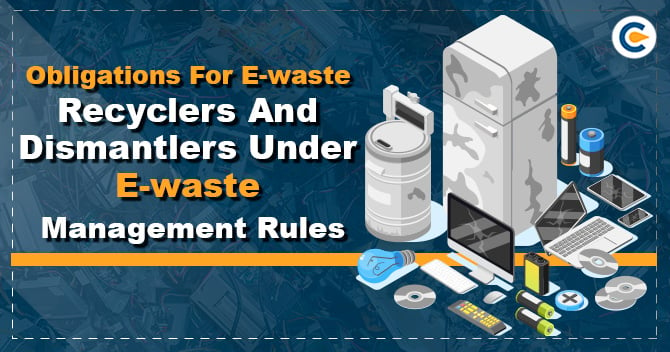The concept of Extended Producer Responsibility proposes comprehensive handling of e-waste in an eco-friendly manner to minimize environmental hazards. The Indian Government introduced it under EWM rules for the systematic abatement of e-waste. Extended Producer Responsibility refers to the policy-oriented approach that compels producers of EEE (electrical and electronic equipment) to ensure systematic and comprehensive management of e-waste in an eco-friendly manner. This write-up seeks to discuss the significance of EPR target in E-waste management.
With e-waste being a problematic concern for the Government, several measures have been implemented to date for its effective management. Unfortunately, such measures have failed to bring any tangible outcome in this regard. This is why the Government implemented the concept of Extended Producer Responsibility under E-waste management rules, 2016[1].
Significance of EPR Target in E-waste Management
EPR plan refers to an implementation plan where the producer renders its overall scheme for fulfilling EPR targets and mentions methods for accumulation and mobilization of e-waste.
The EPR plan in E-waste management seeks;
- Evaluating the quantum of e-waste generated via their end-of-life products, Drafting a scheme for accumulation, and mobilisation of said products with the same EEE code to certified recyclers/dismantlers,
- Estimating budget for EPR implementation
- Outlining scheme for an awareness campaign,
- Declaration about ROHC compliance
Every producer must apply for EPR authorisation via form-1 (E-Waste (M) Rules, 2016. The said form must entail the legitimate details about the accumulation and mobilisation of the end-of-life items as cited u/s 2.1.1 to 2.1.7.
The producers can revise their EPR plan accordingly whenever required, but not without informing CPCB. In such scenarios, the EPR authorisation seeks amendments.
Computation of E-Waste Generation
E-waste generated for a given EEE category code is to be computed on the basis of the quantity of EEE introduced in the market in the preceding years and considering the average life of the equipment.
Such computation should be performed with the aid of the given method:
The e-waste generated via end of life products:
E-waste generation (weight or number) in the FY ‘x – y’ = Sales in the FY ‘(x-z) – (y-z)’ where, ‘x – y’ = FY in which generation is estimated, and z= average service life of EEE.
Details of EPR Plan
Producers must furnish their EPR plan attached with EPR plans attached with Form-1 for seeking EPR authorisation. Producers may furnish various options and schemes relating to E-waste mobilisation, and such schemes should be briefed out with a pictorial representation/flowchart of the e-waste movement.
The schemes and options for E-waste mobilisation may comprise the following:
- Detail of scheme/incentive about returning of electronic waste by consumers/bulk consumers whether via dealers or take-back system or buy-back arrangements or exchange scheme for e-waste mobilization
- If a producer intends to discharge its EPR responsibility via PRO, then details of PRO structure and system of accumulation and mobilization to the certified recyclers/dismantlers of e-waste.
- If the e-waste exchange is a part of mobilization, then the particular thereof.
- If a producer is choosing DRS, i.e. deposit refund scheme’ or exchange scheme for accumulation and mobilization of e-waste, then the particulars of the mode of refund of the submitted amount taken from the consumer or bulk consumer during the time of sale have to be mentioned along with the interest that ends up due at the prevalent rate for the duration of the deposit at the time of time-back of the end of life item.
- Producer of product code CEEW5 may render a list of waste deposition units or collection facilities financed by them according to under rule 17 (1) of the Solid Waste Management Rules 2016 for mobilizing such wastes to
Conclusion
The rate at which e-waste is generated in our country is threatening. E-waste comprises heavy and toxic substances that leave a lasting impact on the environment and human beings. EPR came as a comprehensive solution as it holds producers and other entities liable for e-waste generation. EPR target in e-waste serves as a tangible blueprint for the producer when it comes to effective e-waste accumulation and management. It gives a clear picture about a specific quantity of e-waste to be procured, recycled, reused, dismantled and disposed of for a given year.
Read our Article:Role and Duties of PRO under EWM Rules











